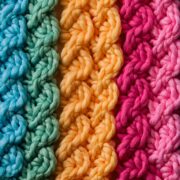Jean is a 23-year-old single parent who grew up in…

Heat rash is a nuisance for everyone, especially for children. Commonly known as bungang araw, this prickly heat rash can be very itchy and cause discomfort for people.
When my one-year-old kid developed the rashes on his neck, he couldn’t stop scratching. He was irritated, and I had to keep telling him to keep his hands off of his neck. Otherwise, the bungang araw might get worse.
I fell into a Google blackhole to find information about heat rashes and what I could do to manage my son’s condition. The search led me to some confusing information and beliefs that needed further probing.
Here’s what I discovered:
Myth #1: Heat rashes are signs of an allergic reaction

Apparently not. Bungang araw occurs due to blocked sweat glands caused by sweat trapped under the skin. It’s prickly heat that causes these rashes. Unlike allergies, heat rash appears as small red bumps – or papules – on the skin.
Heat rashes primarily show up in warm and humid conditions. They appear due to the heat after strenuous activity. In some cases, these rashes occur after sleeping in humid and poorly ventilated area.
Living in tropical climates such as the Philippines’ can put you at a higher risk of developing bungang araw. Sweat fails to evaporate for a couple of reasons: (1) due to the clothes a person wears or (2) the climate a person is in.
Myth #2: Rain cures prickly heat rashes

This may be a common belief in many tropical countries, but let’s weigh the facts. There is, however, some truth to this myth.
Rain does not cure bungang araw. But a cold shower does relieve the discomfort caused by the rashes. Similarly, a shower in the rain gives the same effect, but it does not cure the skin of heat rash. Bear in mind that heat rash goes away on its own unless there are complications.
Myth #3: Eating ripe mangoes can make heat rashes worse

This is a huge misconception. Some may see ripe mangoes as hot food while others see green mangoes as cold. But there’s no scientific basis for this idea.
The lack of research about ripe mangoes making bungang araw worse debunks this myth. No evidence points to the fruit making rashes itchier.
So if you develop some heat rashes, don’t deprive yourself of eating ripe mangoes. You will be fine, according to science.
What You Need to Know

Every type of heat rash appears and feels slightly different. They vary according to severities, as well. These include the following:
- Miliaria crystallina – This is a mild form of heat rash appearing like small, clear bumps. They are blister-like sores full of sweat, and they may burst on their own. They do not itch or hurt.
- Miliaria rubra – This rash, commonly known as prickly heat, shows up deeper in the skin compared to miliaria crystallina. They look like red bumps, and they are itchy. Leaving this type of rash untreated may lead to painful sores with pus.
- Miliaria profunda – As the rarest form of heat rash, this can result in large sores like your skin color. Many become dizzy and nauseated when they develop this heat rash. Once a person develops this, it can recur when the skin is exposed to high temperatures.
Starting treatment at home can help relieve the discomfort caused by bungang araw. There are several ways to deal with heat rashes. The tips may not necessarily cure the skin ailment, but some can ease the swelling and the itchiness.
In severe cases, however, it’s best to call professionals. Go to your local dermatologist to receive the treatment you need, or your kid’s condition requires.
What's Your Reaction?
Jean is a 23-year-old single parent who grew up in Pampanga. As a feminist, she fights against misogyny and misandry one day at a time.


